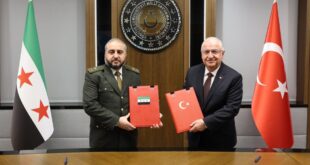 A purported Taliban spokesman claimed responsibility for the blasts and warned of more as NATO prepares to take control of the volatile southern Afghan region.
A purported Taliban spokesman claimed responsibility for the blasts and warned of more as NATO prepares to take control of the volatile southern Afghan region.
The two near-simultaneous blasts Saturday highlighted the continuing challenges confronting the U.S.-led coalition and its Afghan allies as they battle still defiant Taliban militants.
The southern regions, in particular, have witnessed some of the fiercest fighting since the toppling of the Taliban regime in late 2001, and the militants have stepped up suicide attacks and assaults on Afghan and coalition forces as NATO beefs up its forces in the country to 16,000 from 9,700.
Saturday’s attacks underscored the dangers there. In the first bombing, a suicide attacker rammed an explosive-laden car into a coalition vehicle, killing two soldiers and wounding another eight Canadians, said Maj. Scott Lundy, a U.S.-led coalition forces spokesman.
In the second attack, which occurred shortly after the first about 30 meters (100 feet) away, another attacker approached a crowd of people and detonated his vest, killing six bystanders and wounding another 20, said Dawood Ahmadi, spokesman for the governor of Kandahar, adding that both bombers died in the attack.
Qari Yousaf Ahmadi, a purported Taliban spokesman, said both suicide bombers were Afghans and threatened more suicide attacks and ambushes against the U.S.-led coalition and Afghan forces.
The attacks came on the heels of strikes by Afghan forces and the U.S.-led coalition in the southern Helmand province over the past three days that left 19 suspected Taliban fighters dead, said Haji Ghulam Muhiddin, the provincial governor’s spokesman.
He said another 15 Taliban were also wounded Saturday, but managed to flee the area, which is one of the two southern districts briefly captured by militants earlier this week and then reclaimed by coalition and Afghan forces. A search was under way for those who fled.
British army commanders in NATO’s peacekeeping force in Afghanistan want to withdraw from isolated village outposts that have been the focus of the resurgent and fierce Taliban guerrilla attacks, the Sunday Telegraph newspaper in London reported.
The report quoted an unidentified British Ministry of Defense official as saying it “may be necessary to rebalance British forces. Sometimes it is necessary to trade ground for influence. It is a mistake to develop an obsession with holding ground, though the Taliban will try to present this as a reverse for us.”
The report said British commanders hoped that Afghan troops would take over the posts in southern Helmand province, the center of repeated clashes between Taliban and NATO forces.
More than 800 people, mostly militants, have died nationwide since mid-May, when Taliban militants have launched their offensive.
Many from the U.S. force of at least 21,000 troops in Afghanistan are slated to be incorporated into the NATO force of mainly British, Canadian and Dutch troops. They have worked in tandem as part of an anti-terror campaign that has met with stiff resistance from Taliban fighters.
But the U.S. will also maintain an independent combat force to hunt down Taliban and al-Qaeda militants, including Osama bin Laden, whom authorities believe is being sheltered somewhere along the Afghan-Pakistan border.
Also Saturday, coalition forces transferred an accused militant leader detained last week to Afghan authorities, the U.S. military said. Amir Gul Hassanyar was arrested July 16 in northern Kunduz province and allegedly carried out numerous roadside bombings and trafficked in weapons and drugs.
 Eurasia Press & News
Eurasia Press & News



